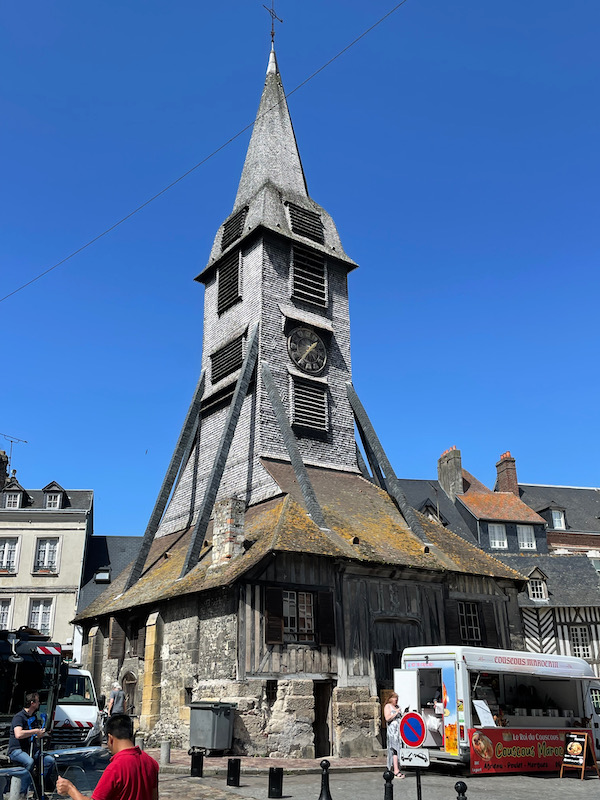Our Blog - Normandy 2023 - Honfleur, France
Honfleur is a little port town, characterized by its houses with slate-covered frontages. They were a favorite topic of several artists including Gustave Courbet and Claude Monet, forming the "école de Honfleur" which contributed to the start of the Impressionist movement.
The first written record of the town is a reference in 1027 by Richard III, Duke of Normandy. Due to its location on the water, it became a main point for shipping goods from Rouen to England. After 1608, Honfleur thrived on trade with Canada, the West Indies, the African coasts and the Azores. Unfortunately, this resulted in the town becoming one of the five principal ports for the slave trade in France (I guess good for the economics of the town, bad in general). While some may think that the name has something to do with flowers (fleur is flower in French), the "fleur" part means "stream or river running to the sea".
About 2 1/2 months after the D-day landings, Honfleur was liberated by the British, Belgian, and Canadian armies. Thankfully, the town was spared from any fighting so the old town is well preserved.
Interesting points of trivia: the current mayor has been in office since 1995 and there has only been 3 mayors since 1947 (one from 1947-1971, then 1971-1995, and then the current mayor). And for some unknown reason, the town has hosted the Russian Film Festival every year from 1995 until 2021. It was suspended in 2022 due to the Russian invasion of Ukraine.
Our first stop in town (after lunch) was the Église Saint-Léonard. The building dates from the 16th century and then reconstructed in the 17th century. The octagonal dome-shaped bell tower, which was added in 1760, is quite unusual in this area. The façade on the front of the church is in flamboyant Gothic style.
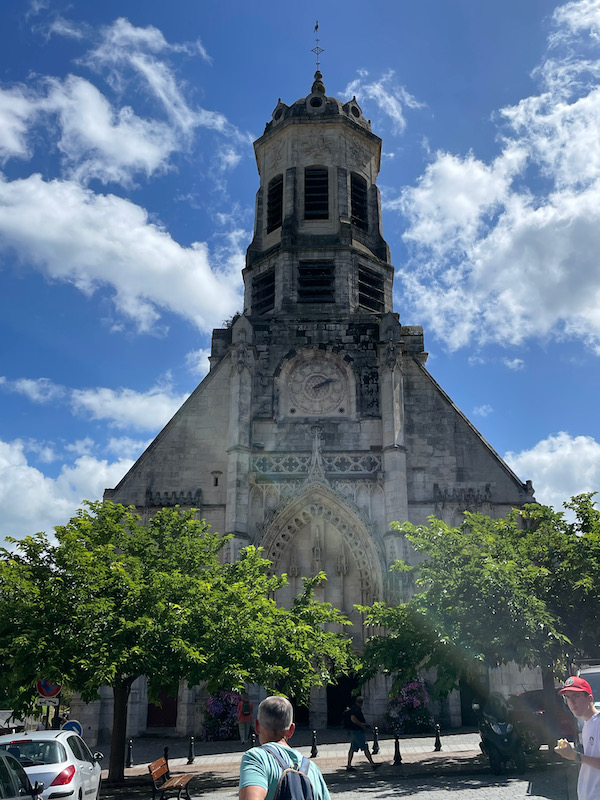
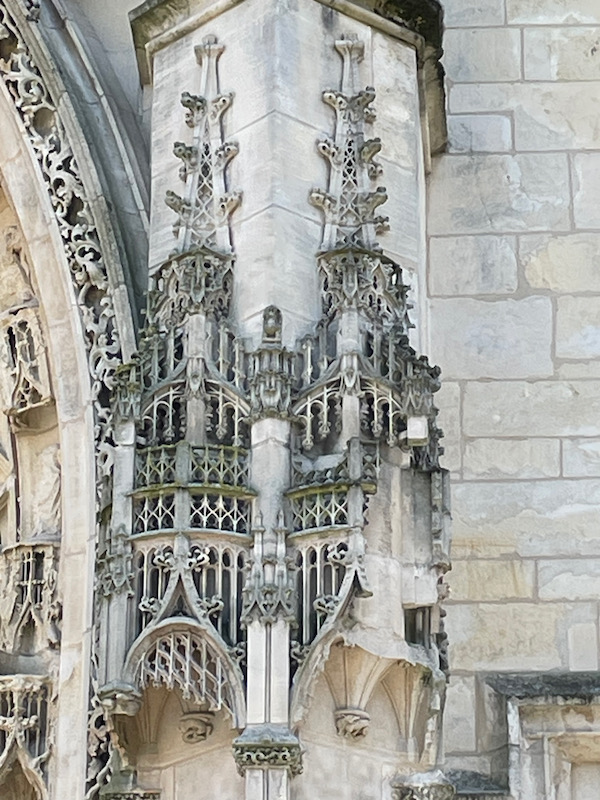
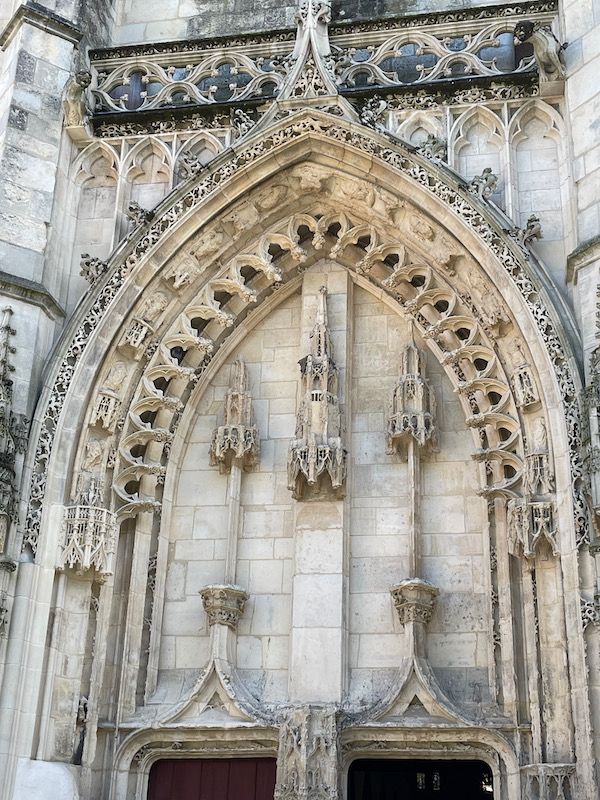
Heading inside, I thought the holy water font was quite interesting, with a large shell on top. The shape of the church is rectangular, with the nave and side aisles but no transept to speak of. The roof is in the shape of an inverted boat hull and the majority of the walls are painted with 19th-century frescoes.
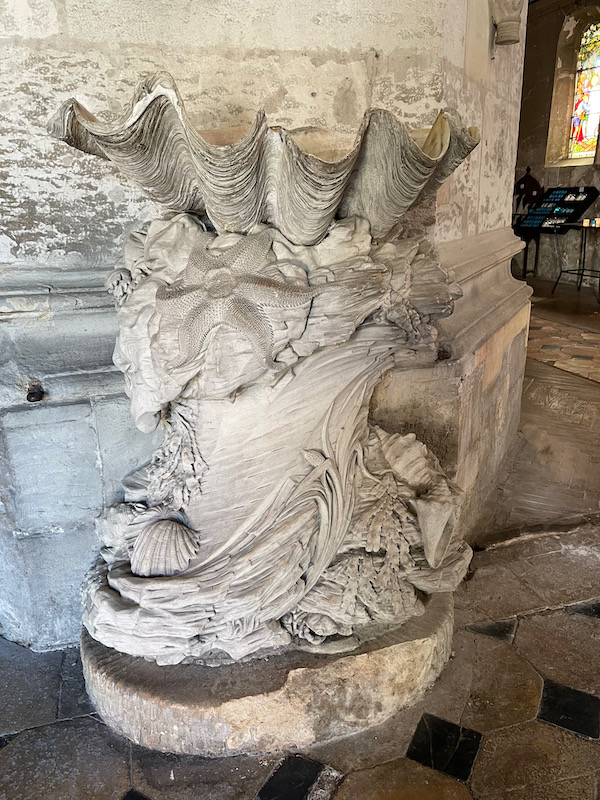
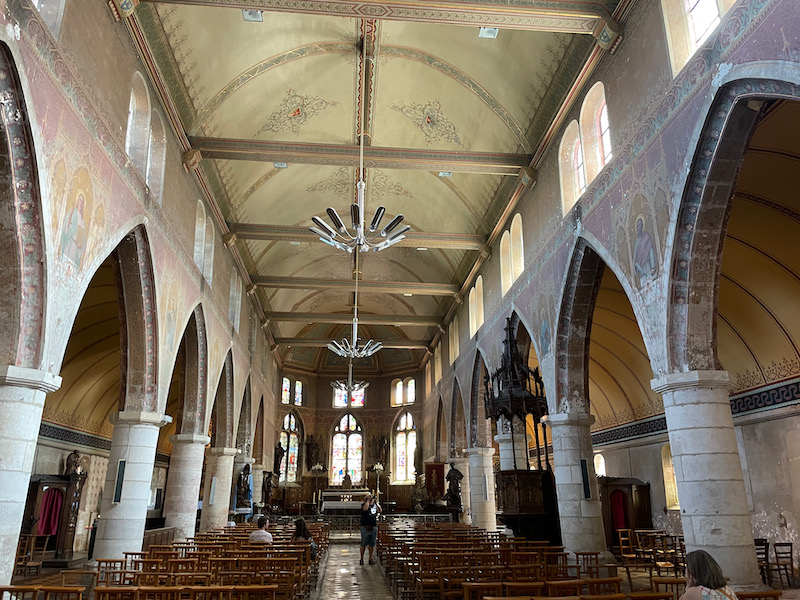
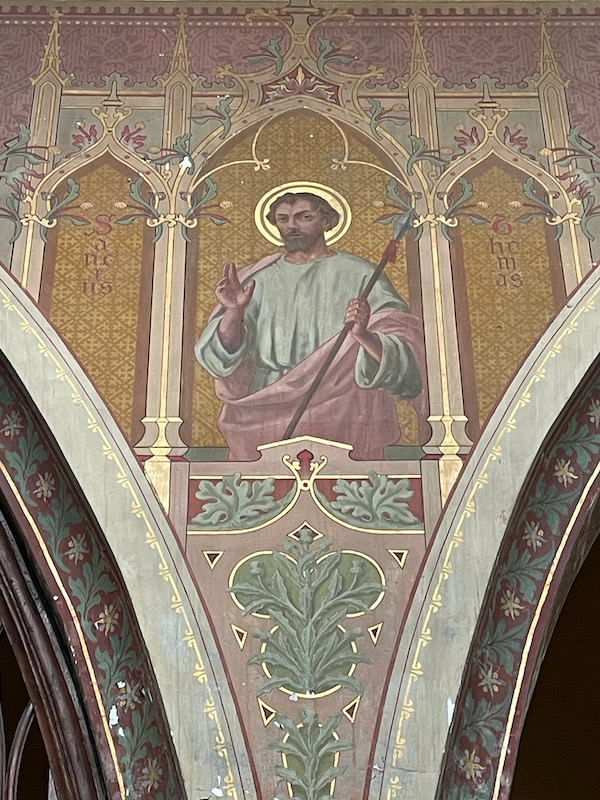
The altarpieces at the end of the 2 side aisles were actually more impressive and elaborate than the main altar.
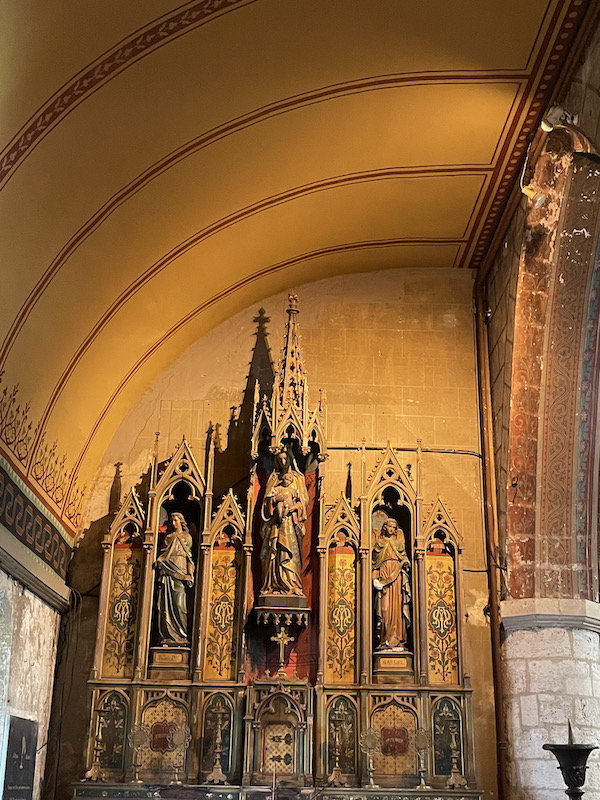
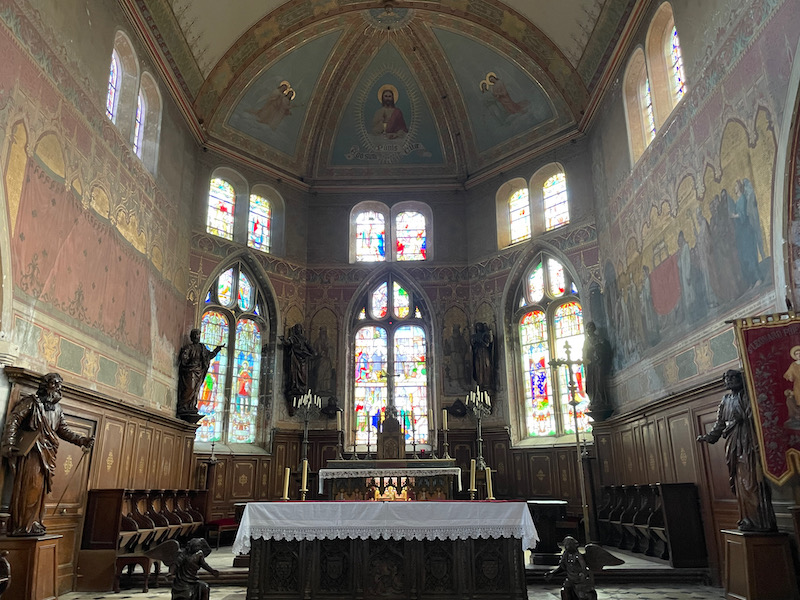
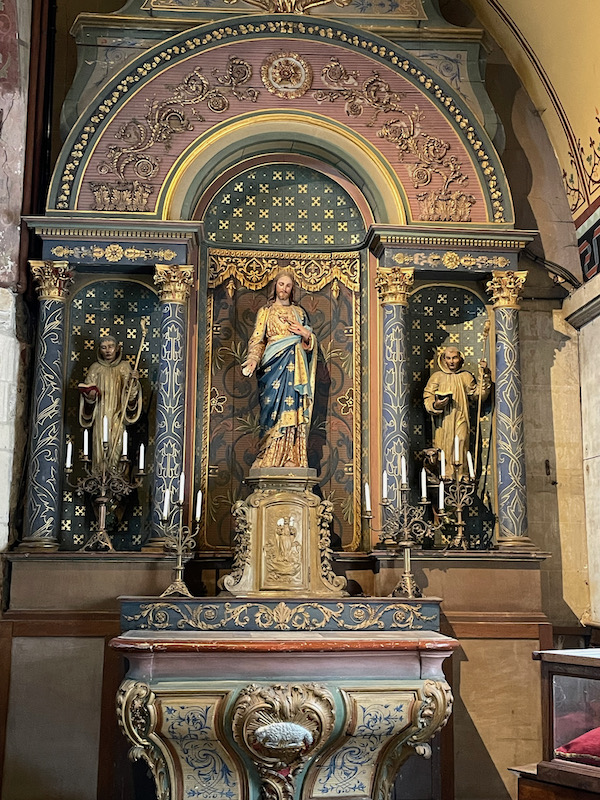
This is a wooden statue of Saint Leonard, which has 2 people at his feet in chains. I thought this was somewhat weird until I read that some of his miracles dealt with the release of prisoners.
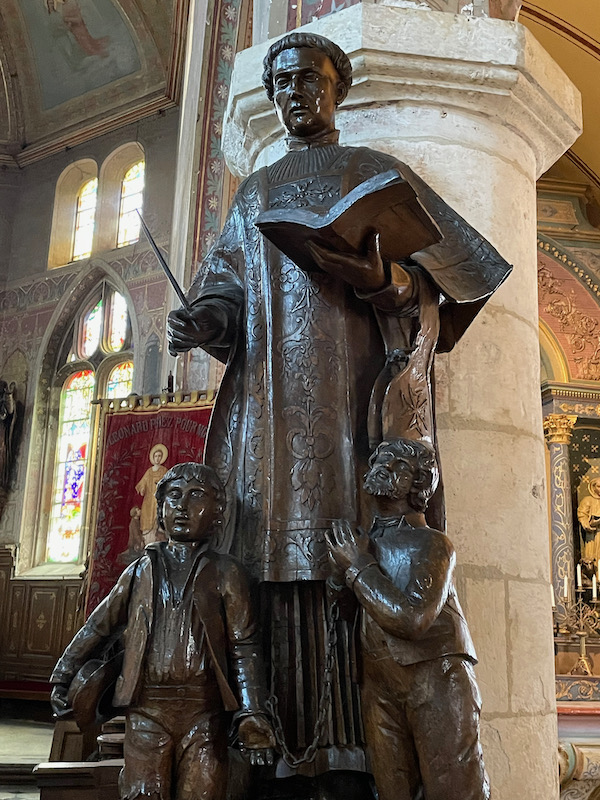
Lastly, the organ above the entryway. You can see the frescoes on either side and also a bit better view of the inverted-boat hull ceiling.
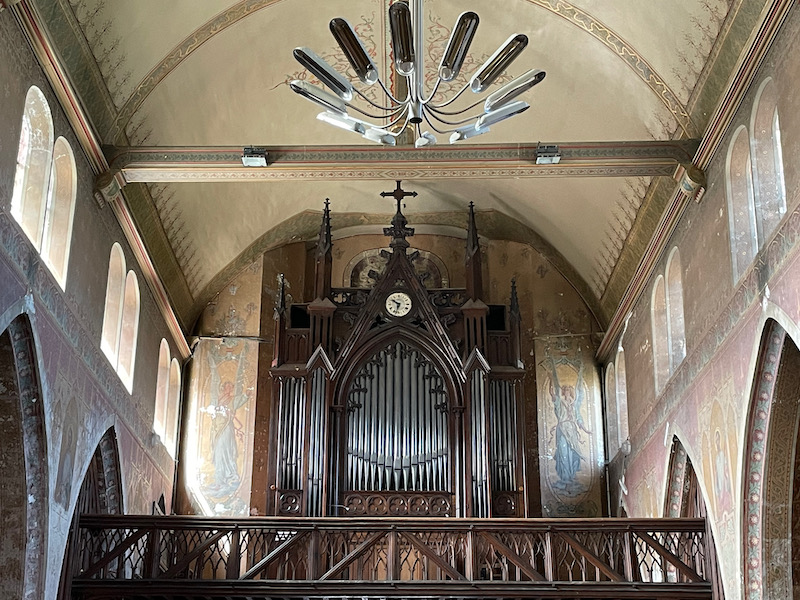
A few pictures of the nice houses in the city center. Some are brick while there are quite a few nice half-timbered houses as well.
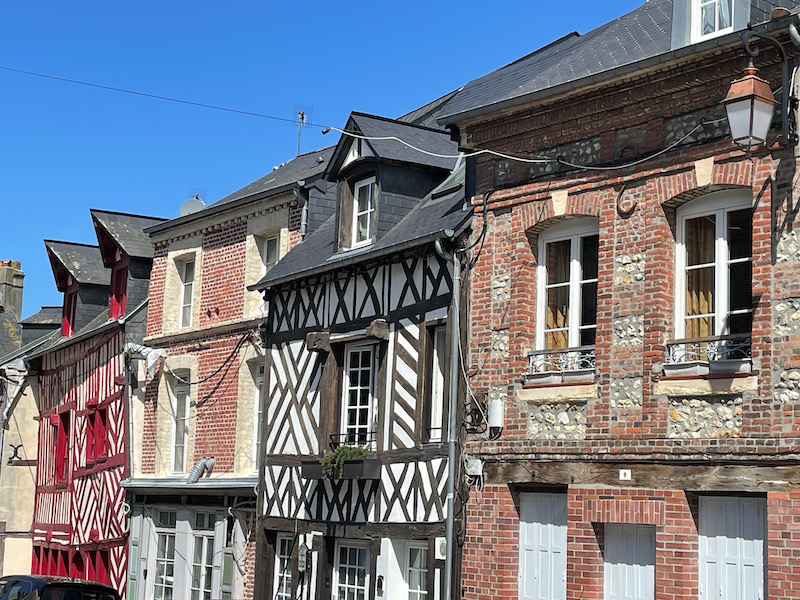
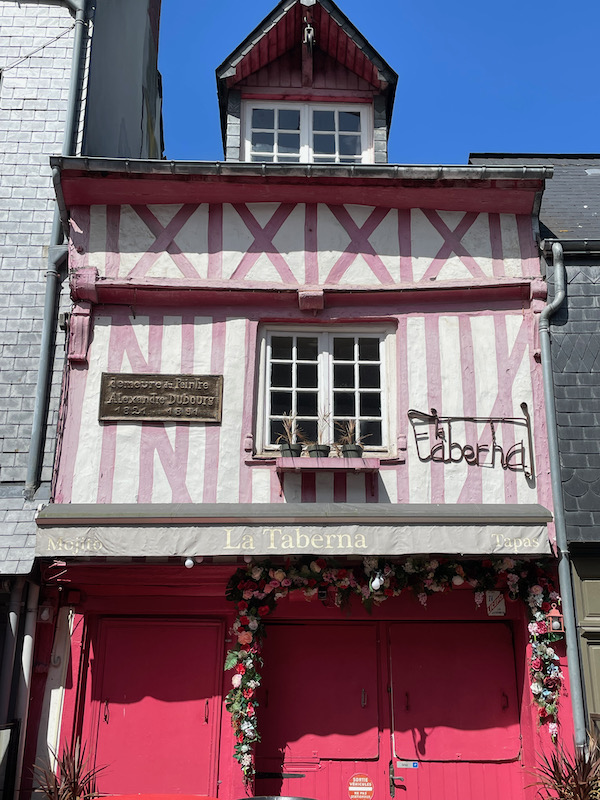
There are still 2 of the original 3 salt barns from the 17th century. They could hold up to 10,000 tons of salt for preserving the fish caught and brought back to the port. The walls were constructed with great blocks of chalky limestone with wooden vaulting, which, being constructed by naval carpenters, evoke the hulls of boats from the 17th century. It was nice to see that the town kept these and have found a use for them .. today there was an art exhibit.
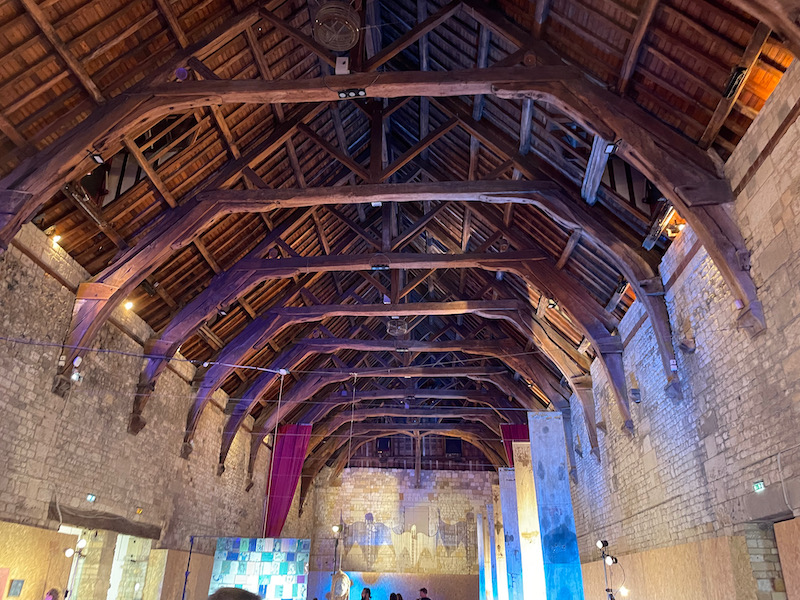
Here is one example of the slate-fronted houses, which I don't really quite understand. Basically you have a house that has a "normal" ground floor and then slate roofing tiles that cover the exterior walls of the first floor. A bit bizarre for me, but quite common here. I thought this one was unique with the little decoration on the corner.
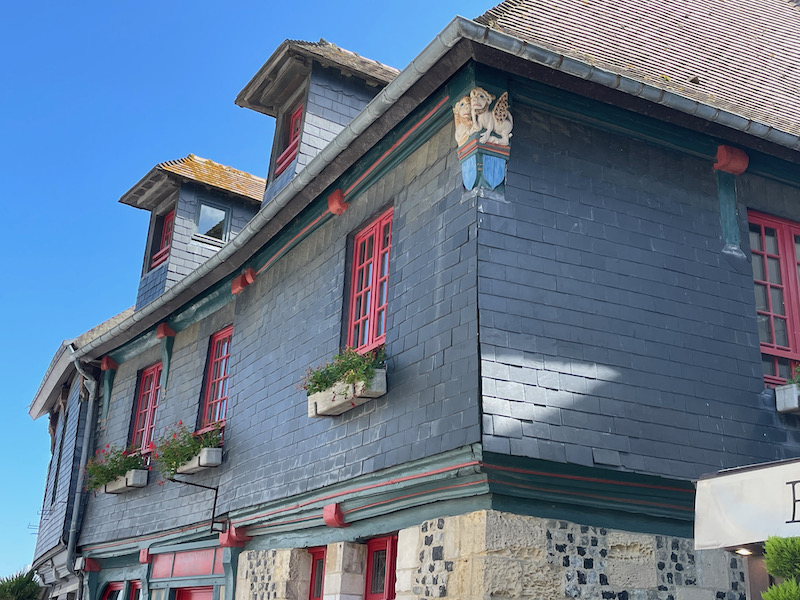
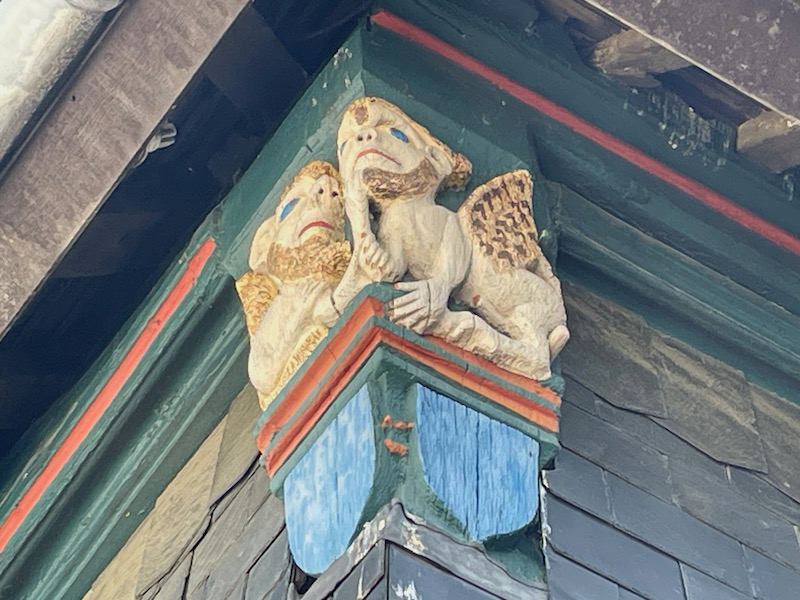
The old port lined with tall buildings.
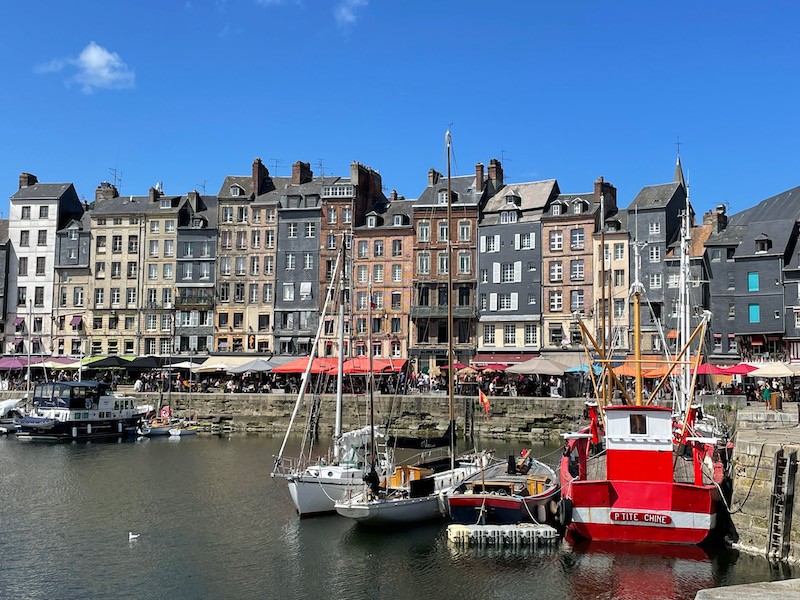
Sainte-Catherine church is the largest wooden church in France. The church is partially covered in chestnut shingles and partially still showing the half-timbered structure.
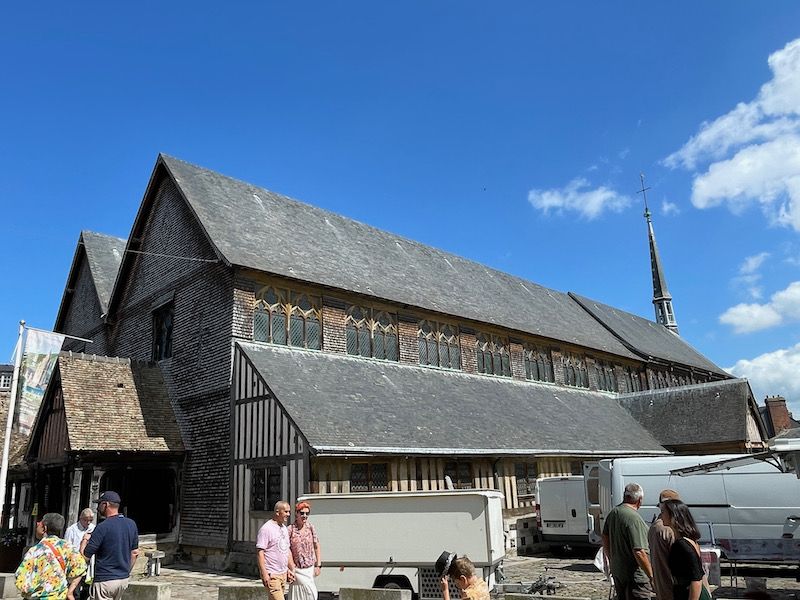
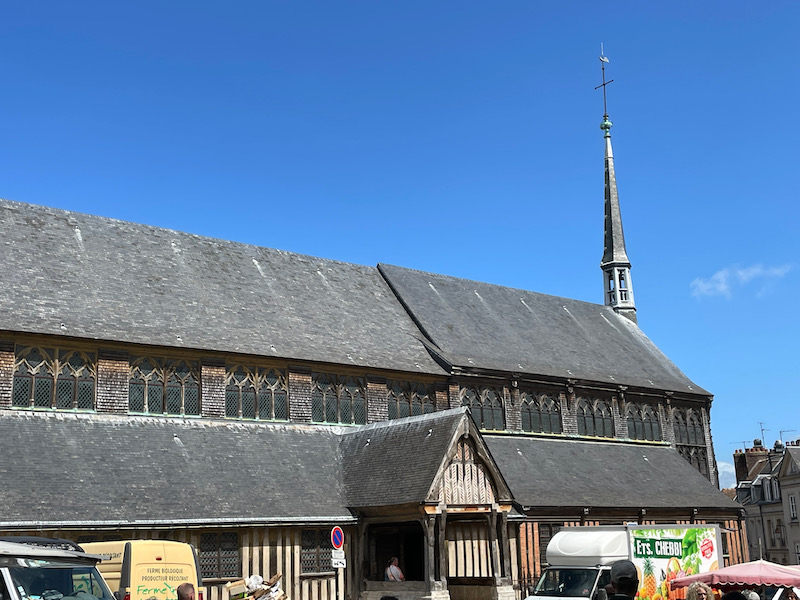
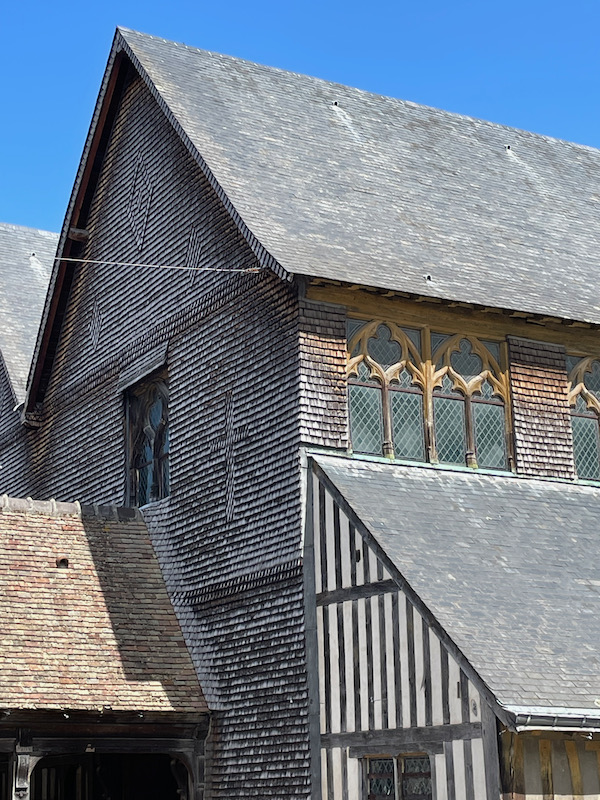
The design is interesting as it has 2 naves and a somewhat lopsided look. The first nave dates back to the 15th century and was built on the model of a market hall and using naval construction techniques, which gives the impression of an upside-down ship's hull. In the 16th century, a second nave was added, whose vault is more like the wooden vaults of modest Gothic churches (more rounded and doesn't look like a ship's hull). The stained glass windows were installed in the 19th century.
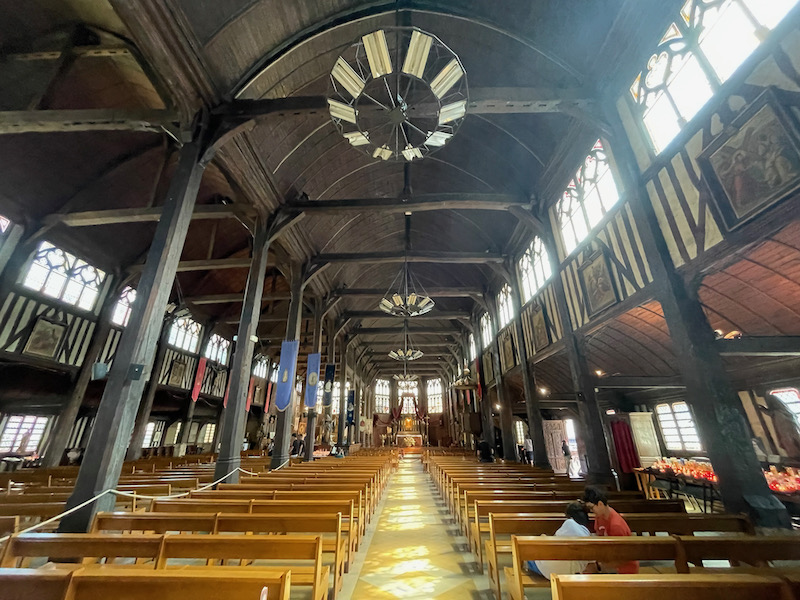
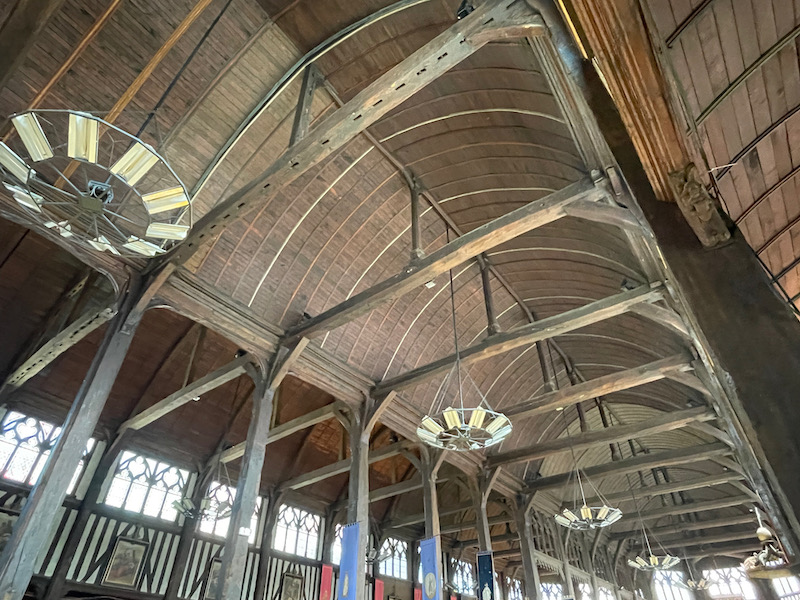
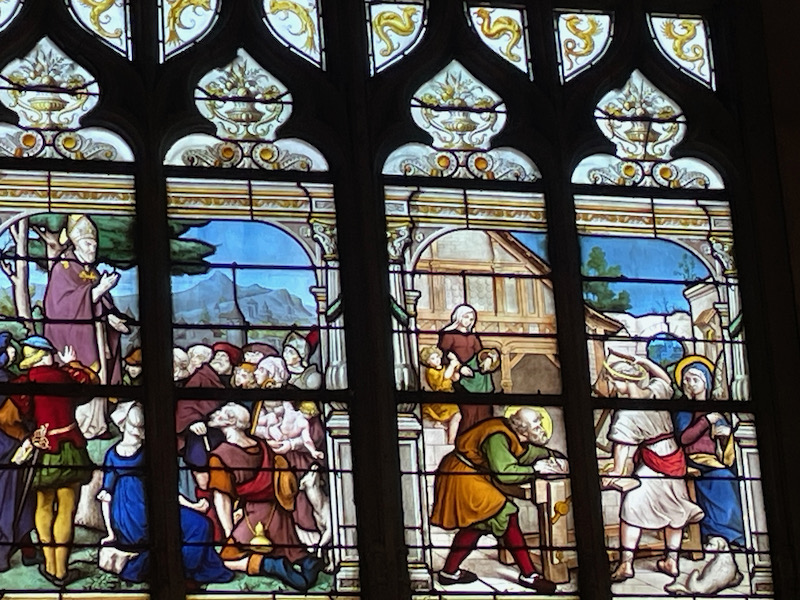
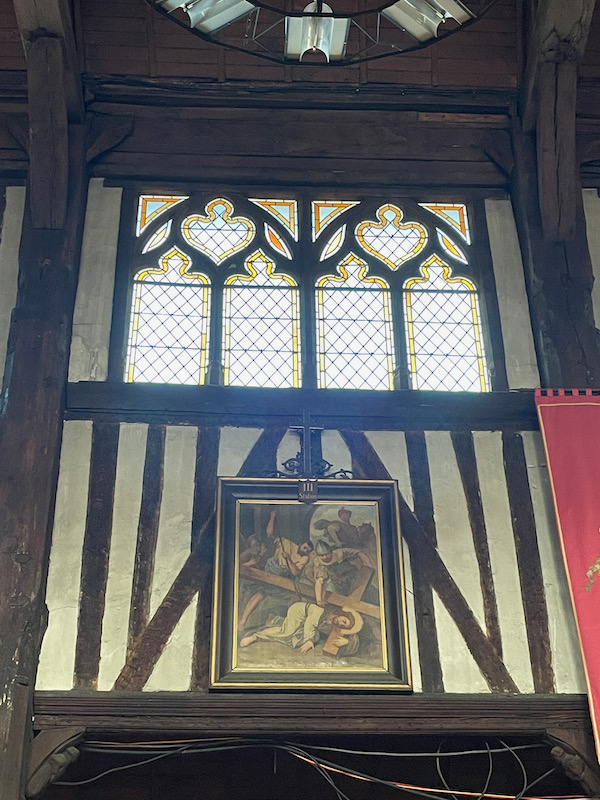
One of the masterpieces of the church is its organ, dating from the 18th century, and its carved oak cabinet.
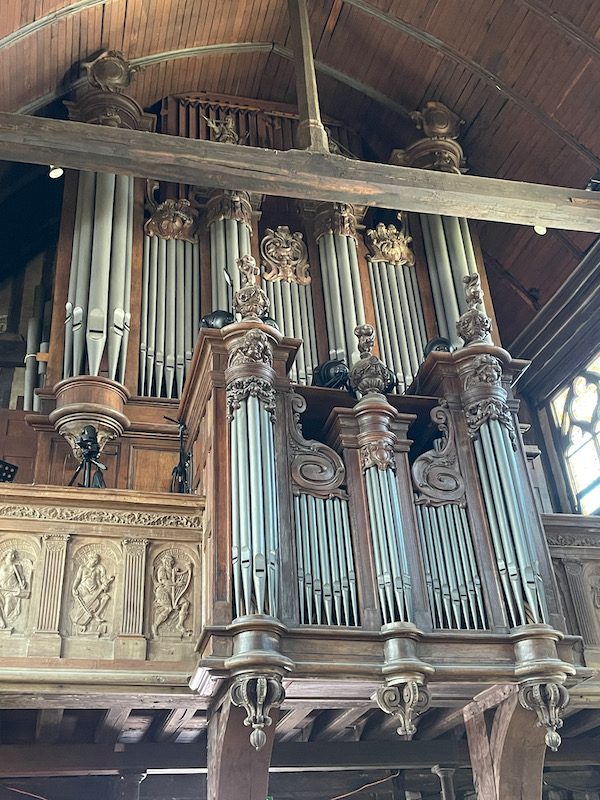
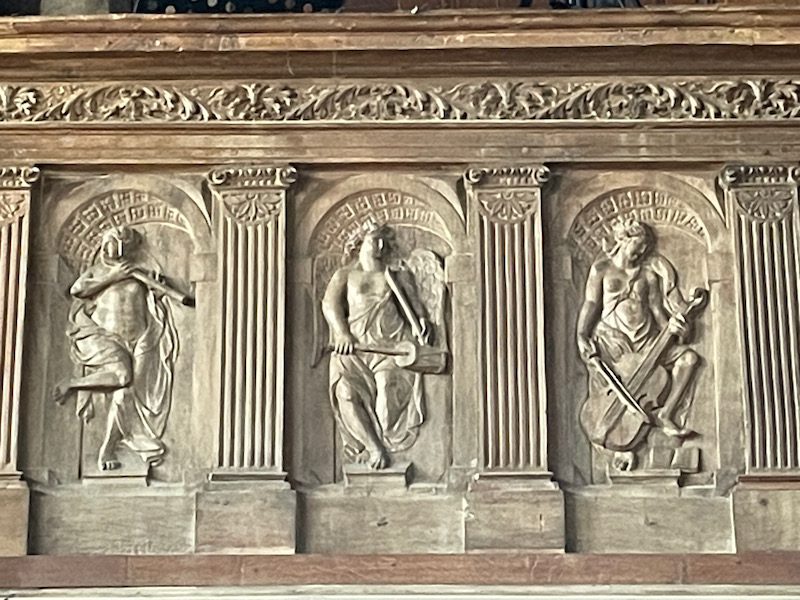
The main altar has a fabric canopy above it, and there are a set of small ship models, an hommage to being at the port.
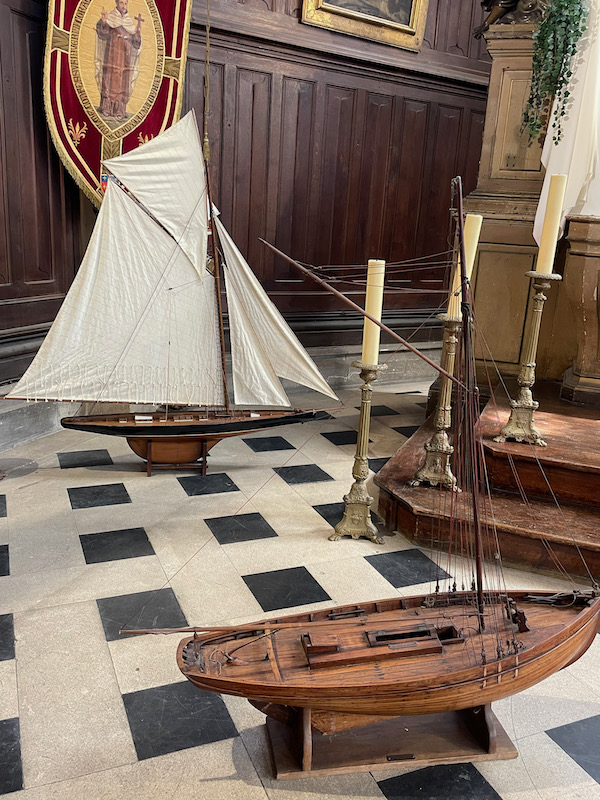
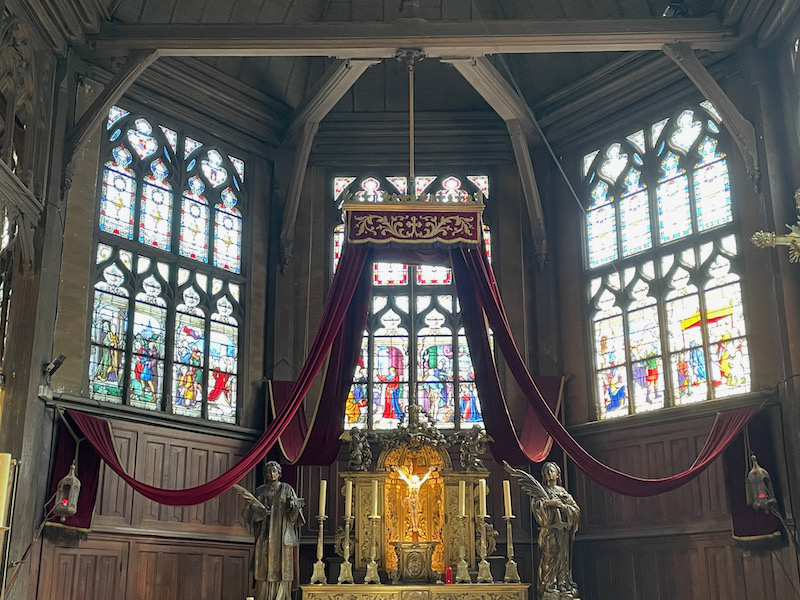
The bell tower was built across the way, separate from the church itself, in case of fire (and indeed, the bell tower did get hit by lightning strikes but didn't actually catch fire).
